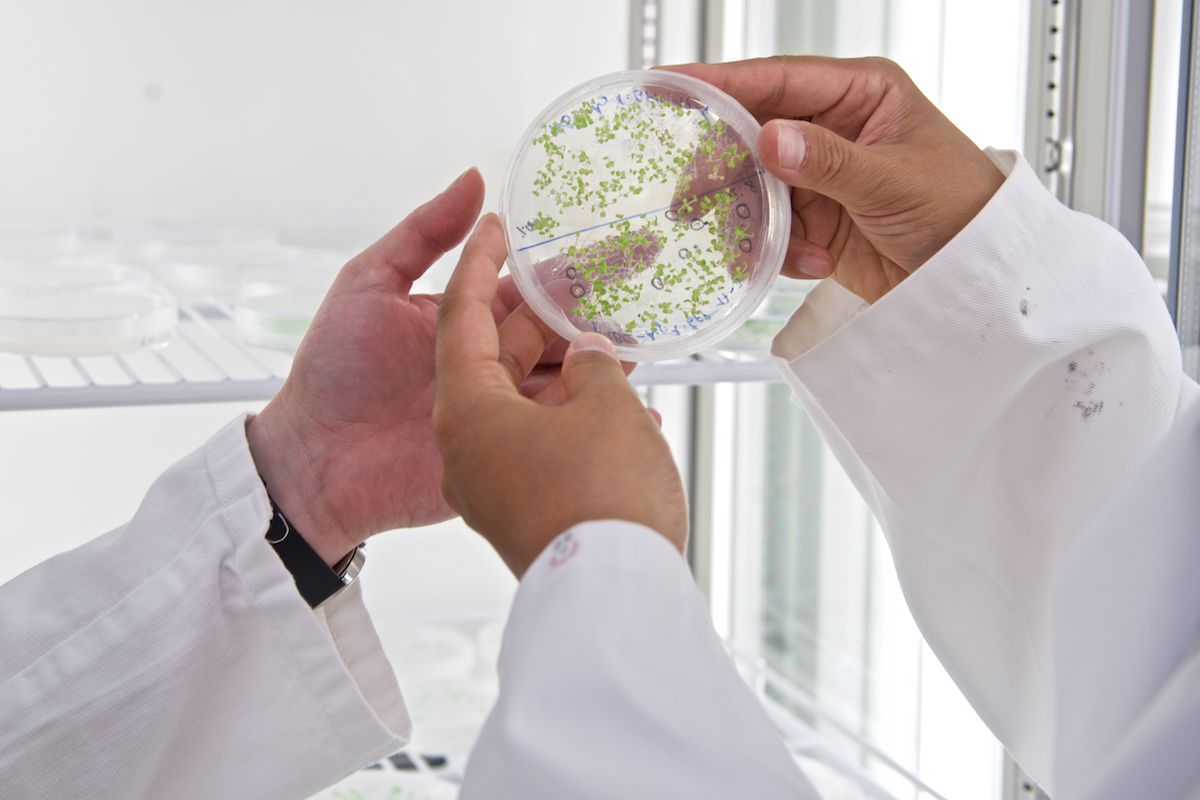
Neatly packed for the cellular recycling centre
How do plants break down damaged cell components for recycling? Konstanz researchers unlock an important molecular mechanism in cellular recycling.
Unlike many animals, plants cannot simply move elsewhere when they encounter hostile conditions. Thus, they are even more dependent on having ways to effectively counteract the negative consequences of harmful environmental influences – also known as environmental stress. This includes breaking down cell components and proteins damaged by environmental stress and recycling their valuable parts.
In plants, animals and fungi, this process takes place in special digestive organelles. However, the materials slated for recycling must first be packed and transported to the digestive organelles. An interdisciplinary team of biologists and chemists from the University of Konstanz has now decoded the molecular mechanism behind the packaging process. Their research results have just been published in Nature Communications.
Particularly important for managing environmental stress
Soil with high salinity is a prime example of the environmental stress plants can encounter. Today, an estimated 20 percent of agricultural land worldwide has become inarable due to soil salinization. For plants that grow in these conditions, this means cell components can be damaged or aggregates can accumulate that are toxic for the cell.
The digestion of these components and substances has a twofold benefit for the plant: The harmful material is removed and valuable molecular resources can be recovered. "When plants come under stress, it is particularly important for them to have a well-functioning cellular recycling system. These plants need to produce many new proteins and molecules, and the recycling process provides them with important raw materials", explains biochemist Erika Isono, whose research team in the Department of Biology at the University of Konstanz played a leading role in the recent study.
The right machine in the right place
The recycling process begins with the respective material being enveloped within the cell by a transport vesicle – known as an autophagosome – with a double membrane. The material is later transported to the digestive organelles in these vesicles. But how do the transport vesicles seal before being transported? There is a molecular machine with several subunits involved in the sealing process: the ESCRT machine. This filamentous protein complex attaches to membranes like those of autophagosomes. When this happens by an opening, this causes it to constrict and seal shut.
Until now, it was not well understood how the ESCRT machine reaches the autophagosomes in plant cells. "The ESCRT machine works on many different organelles and membranes in a very similar way. We were thus interested in finding out how it is specifically recruited to the autophagosomes when required", says Niccoló Mosesso, lead author of the study and a doctoral researcher in Erika Isono's team. The Konstanz researchers succeeded in identifying and characterizing the key protagonist in ESCRT-dependent autophagosome maturation: the CaLB1 protein.
More than a temporary solution
"The protein we identified interacts with components of the autophagosome membrane during salt stress. It accumulates there and forms large protein structures that presumably sit on the opening of the transport vesicles and could temporarily seal them like a cork", Niccoló Mosesso explains. The researchers postulate that, at the same time, the CaLB1 condensates cause the ESCRT machine to attach in the opening area of an autophagosome and seal it for good.
The success in unlocking this mechanism, is the result of close, interdisciplinary collaboration between biologists and chemists that has a long tradition at the University of Konstanz. The results of this basic research lay an important foundation for possible future applications. "Precise molecular knowledge of how plants react to salt stress could, in the long term, help to increase the resilience of plants in order to counteract the increasing problem of soil salinization", concludes Erika Isono.
